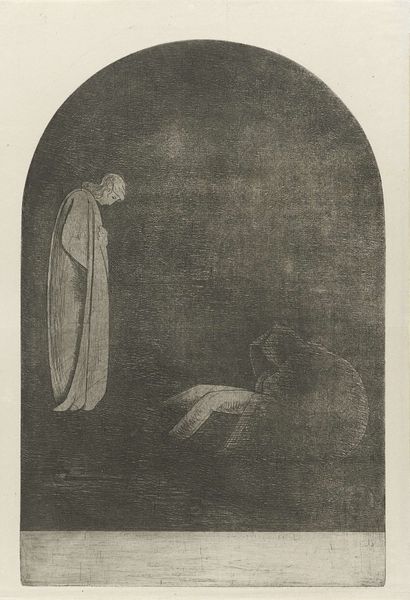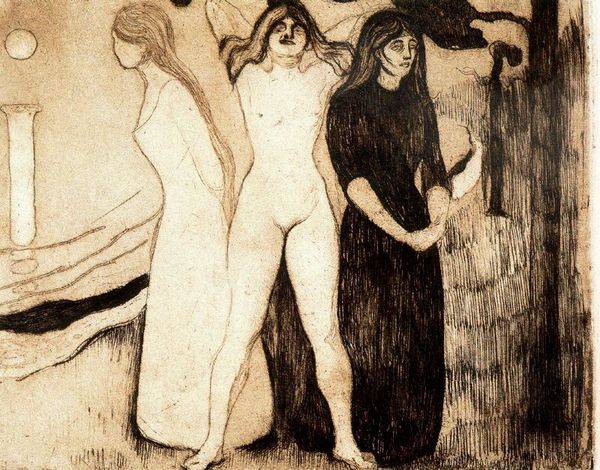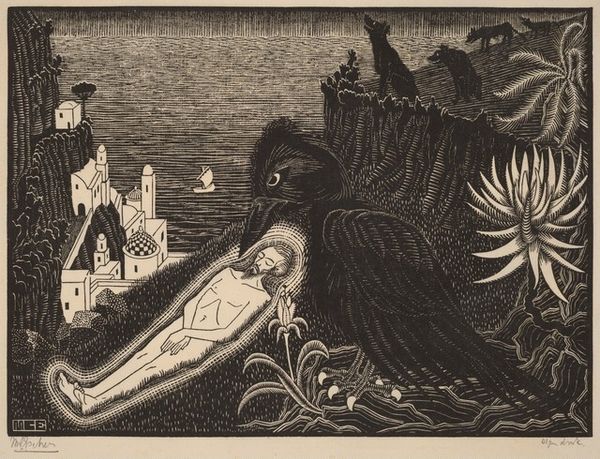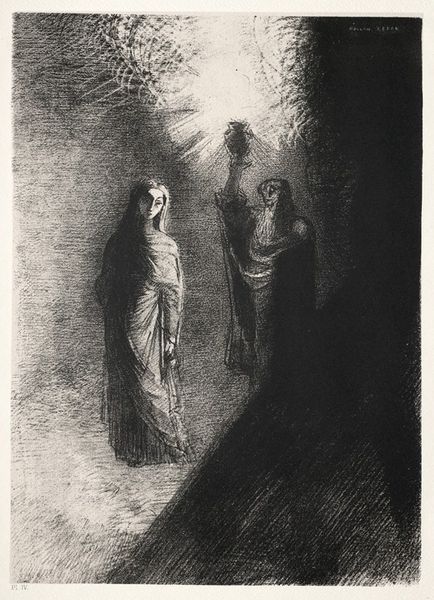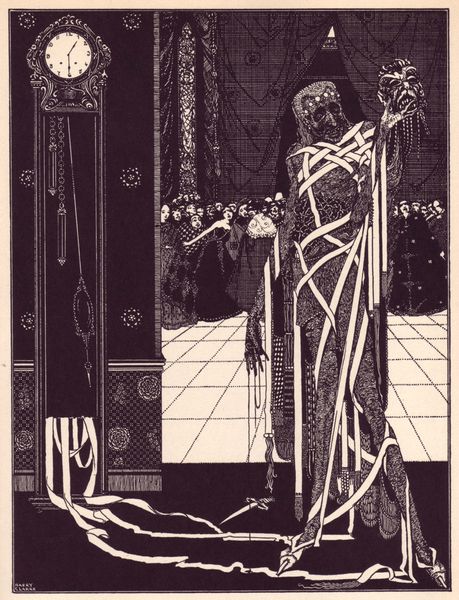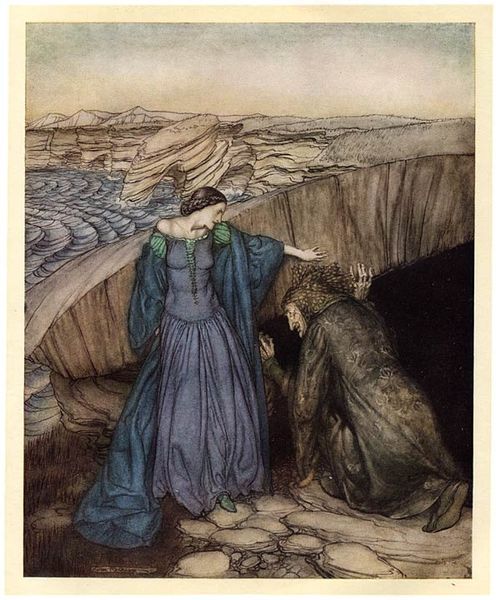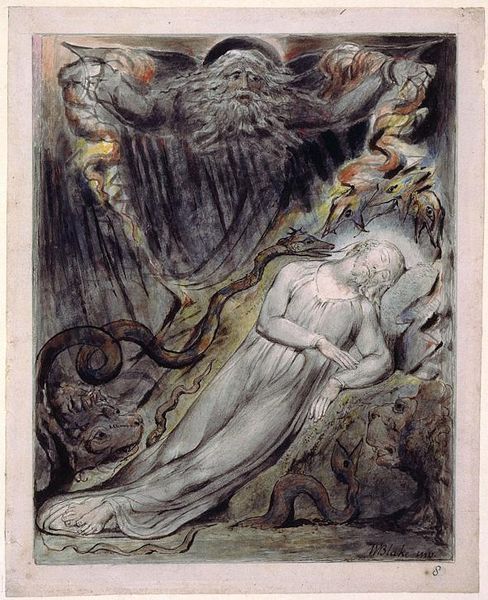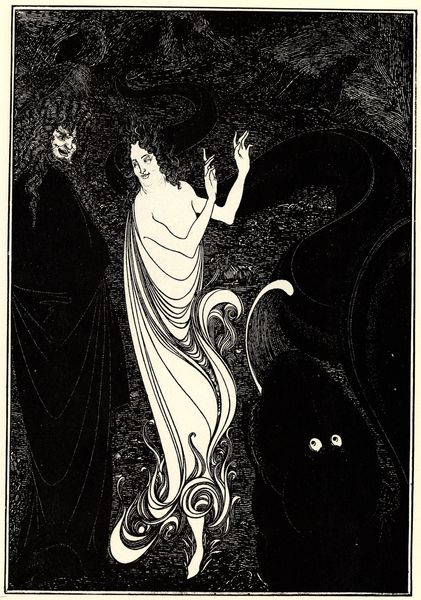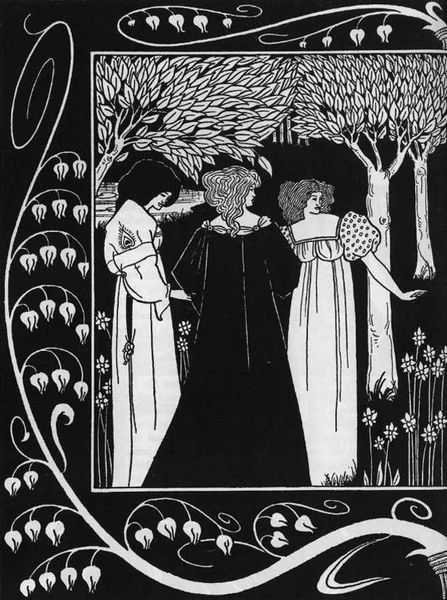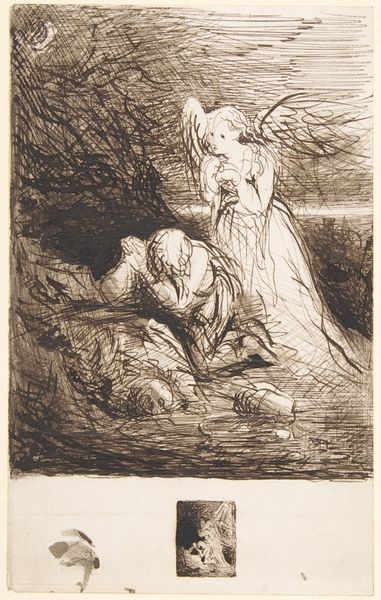
drawing, print, ink
#
pencil drawn
#
drawing
#
narrative-art
# print
#
fantasy-art
#
figuration
#
form
#
ink
#
expressionism
#
line
#
symbolism
#
history-painting
#
nude
Copyright: Alfred Kubin,Fair Use
Editor: Alfred Kubin's ink drawing, "Der Todesengel," which translates to "The Angel of Death," certainly has a stark mood. I'm struck by the contrast between the skeletal figure and the more lifelike human form. How do you interpret this work, particularly the symbolism embedded within the imagery? Curator: Well, it's hard not to see it as a symbolic representation of mortality, and maybe even acceptance of death, through the ages. Note how the “Angel of Death,” cloaked and crowned, could be read as a historical personification of death itself, a cultural symbol passed down through art and folklore, almost indifferent, certainly inevitable. And how does its pose mirror or contrast with the nude figure, do you think? Editor: I see a contrast in their positions. The nude figure is slumped and seems to have given up all agency. Whereas the angel has more than a regal composure. Curator: Exactly. Kubin is likely drawing upon a reservoir of cultural anxieties, but he is reframing the narrative. Think of death as not just an ending but a transition, a gatekeeper like that stone archway they stand beneath. What emotional effect does that generate in you? Editor: It still feels unsettling, but perhaps a little less bleak knowing there’s a door…somewhere. Maybe death as a beginning. Curator: Indeed! Kubin has masterfully used imagery to touch on those fundamental, universal anxieties and hopes, hasn’t he? And our readings of those images also say something about the world as it stands today. Editor: I hadn't thought about it that way, but symbols can act as cultural time capsules, can’t they? Thank you.
Comments
No comments
Be the first to comment and join the conversation on the ultimate creative platform.
